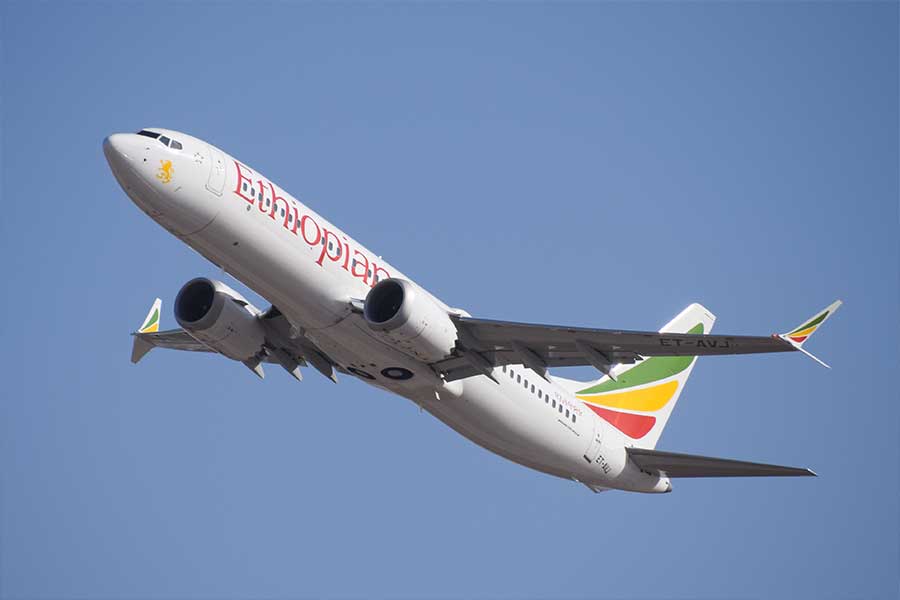
Fortune News | Nov 12,2022
The most expensive road ever built in Addis Abeba had begun four years ago, hopes high that it would be a passageway easing congestion on an otherwise jammed highway. The 10Km corridor from Qality to Tulu Dimtu, connecting the capital to expressways leading south, is vital for external trade. It links Addis Abeba to a dry port facility in Modjo.
The cost of the much-touted project was partly covered by 103 million dollars in loans received from the Export-Import Bank of China (EIBC), with the China Communications Construction Company (CCCC) contracted for a price tag of nearly 230 million Br a kilometre. The road was meant to be completed last year; it has yet to open for traffic.
It is, however, customary for road constructions to run notorious delays. Design changes, disputes with residents on rights of way, cost escalation and project mismanagement claim top in the list of troubles. However, the culprit behind the lull on the Qality-Tulu Dimtu road is something less common.
The construction is one of several megaprojects affected as the Chinese creditor withheld loan disbursements until Chinese state officials review Ethiopia's debt standing. Others held up by the snag include a segment of the Modjo-Hawassa Expressway, the Bole Lemi and Qilinto Industrial Zone Power Transmission, and the Addis Abeba Power Network Rehabilitation & Upgrading projects.
Nonetheless, the Qality-Tulu Dimtu project is in progress with financing from the federal government after the City Administration decided to pursue it, disclosed Moges Tibebu, director-general of the Addis Abeba City Roads Authority (AACRA).
The sage of these public projects brings to light a significant dip in external loan disbursements Ethiopia is currently going through.
Public debt sustainability, particularly from external creditors, has become a source of frustration for federal officials in charge of debt-managment. Ethiopia's external debt exposure of over 29 billion dollars deters the country from accessing other loans from international lenders, whether bilateral or multilateral.
Ethiopia received 1.4 billion dollars in external loans last year, a staggering 57pc drop from the previous year, according to data from the Ministry of Finance. Alarmingly, it is a trend persisting. It was a total of 137 million dollars in loans disbursed to Ethiopia in the first quarter of this fiscal year, 37pc lower than the same period last year.
This undoubtedly bothered the officials, judging by a statement in the annual bulletin issued by the Finance Ministry. Acknowledging the low disbursement rate from many creditors, it urges "executing agencies" to find out the reasons for the sluggish release of loans already approved. According to a senior government official who requested anonymity, it is the overall security and political situation that is to take the blame.
"These things were unplanned for," said the official.
For years, project management problems and inefficient procurement processes have caused delays in disbursements from financiers, particularly from multilateral financial institutions. The experience of one of the most prominent financiers of Ethiopia, the World Bank, attests to this.
The World Bank accounts for 38pc of outstanding loans. It also makes up one-third of committed but undisbursed loans, followed by the International Monetary Fund (IMF). The Bank is a crucial source of funding for Ethiopia's economy, paying for close to 40 projects now active. Its total annual loan disbursement stood at 3.4 billion dollars over the past three years.
World Bank officials tend to attach performance when releasing loans. Failure to meet milestones leads to withholding disbursements, forcing project revision, hence cost escalation.
The projects at Bole Lemi and the industrial park in Qilinto illustrate the story. Conceived five years ago with 200 million dollars, officials had solicited additional financing of 225 million dollars to accommodate cost overruns and design changes.
Another major issue that has persisted for years is delays in procurement.
The World Bank has a stringent procurement process where each step is reviewed before an award is announced. The Bank had attempted to soothe the issue, hiring specialists who support project offices; but, it is yet to be solved. A few weeks ago, the Maritime Authority requested 25 million dollars in additional financing for the Mojo Dry Port expansion project, which has also had its completion date pushed back by more than two years. Nonetheless, the World Bank has approved the additional funds.
The economic value and urgency attached to the projects are behind the decisions to approve top-ups, said a staff who works at the World Bank.
These are glaring issues the administration of Prime Minister Abiy Ahmed (PhD) is aware of, scolding project managers to stick to the initial plans in 2018. Following that, no additional financing requests were made to the World Bank for about two years, according to people close to the matter. The COVID-19 pandemic, however, has brought back an old habit. As supply chain disruptions followed in the wake of the pandemic, project managers began to request additional funding to import project materials. Then comes the war.
The military conflict raging in the country's north has proven to be a significant setback for projects in the war-affected areas, including a rural safety net programme. The World Bank supports eight million people in eight regional states, including the Amhara, Afar and Tigray regions, the places most afflicted by the ongoing war. Yet, the Bank has disbursed close to 100 million dollars this year, 40pc lower than the same period last year and a 58pc drop from two years ago.
In a country where a sizable budget deficit reached 126 billion Br at the dawn of the fiscal year, authorities have little in the way of options outside of seeking external funding to bridge the gap to pay for public infrastructure. Transport, communications, agriculture and energy have been the sectors that have received the most from external financing over the past five years.
Reluctance by foreign creditors to open up their palms compelled the administration to petition parliament for a supplementary budget no less than three separate occasions last year, totalling 111 billion Br. The deficit was expected to be covered domestically, primarily from the central bank's treasury bill (T-bill) sales.
As foreign lenders tighten their purse strings, the administration has been forced to dip into its treasury to finance projects, further straining the already overstretched budget deficit. Federal officials expect 56 billion Br in external loans and four billion Birr more in grants this year. In each case, their expectations exceed what they had planned for last year by around 10 billion Br.
Deferred economic benefits are also a concern. Projects completed in time could contribute to economic growth and help the country service its debts. The Modjo-Hawassa Expressway was expected to open to drivers fully this year, creating a valuable trade corridor and income from toll fees but half of the road has yet to be finalised.
"It's not the best use of value for money," said a staff at the World Bank.
Administration officials believe they have introduced a rigorous appraisal scheme to ensure public- and externally-financed projects progress according to plan. The Ministry of Planning & Development has been reviewing projects since last year. Each project is checked against the national development plan, according to Nemra Gebeyehu (PhD), a state minister for Planning & Development.
“It also helps projects stick to the predefined schedule,” he said.
Nonetheless, the debt reprofiling Ethiopian authorities have asked under the IMF’s common framework agreement, coupled with deteriorating diplomatic relations because of the war in the north, has made it difficult to source loans and grants for over a year. The suspension of 2.9 billion dollars in concessional loans from the IMF, earmarked for implementing the homegrown economic reform, has not helped but exacerbated the crisis. Through the extended credit and funding facilities, only 310 million dollars has made it to the government’s coffers since 2019. Most of it was to be used to beef up the country's foreign currency reserves, only enough to pay for a little more than two months worth of imports.
The reserves will not improve as much as they could have, according to Melese Minale, a senior macroeconomic advisor at the central bank.
The authorities have decided to use a significant portion of the funds allocated from the IMF's special drawing rights (SDR) to build the country's reserves instead of using it to service debts.
The government has made overtures to begin negotiations for another programme with the IMF, but the Fund has shown reluctance. Its officials point at the heightened uncertainty and the impact on the macroeconomy for their reticence.
"It's difficult to move to programme discussions at this stage," reads a statement from the IMF. "But, we stand ready to engage when the time is right."
The situation is not much different for grants. Public transfers, including grants, showed a 64pc drop compared to the same period last year, according to the central bank's report for the fourth quarter of the last fiscal year. The decline was exhibited throughout the last half-year; however, the first two quarters saw jumps of 28.4pc and 26.5pc, respectively, of incoming grants of less than a billion dollars.
Neither have new commitments been encouraging. No new loans have been pledged since March last year, although commitments are relatively rare in the first quarter of a fiscal year. But, the data from the past five years shows a general trend of decline from 4.7 billion dollars two years ago to 1.9 billion dollars last year.
Scaling down the use of commercial borrowing is a conscious decision made by the government a couple of years ago, resulting in fewer loan commitments. Ethiopia is relying more on bilateral and multilateral concessional loans. It inevitably puts pressure on the country's precarious fiscal situation.
Federal officials are left with a few options: increase tax, which is politically unfavourable and problematic in this time of economic hardship due to the pandemic and war. They can keep on issuing treasury bills or borrow from the central bank, the latter with considerable inflationary risk, according to Abdulmenan Mohammed, a financial analyst based in London.
"Among the options available, issuing more treasury bills is the better one," he said. "Still, this does not address the forex that could be obtained from grants."
Meanwhile, the Qality-Tulu Dimtu corridor and a half-dozen other projects will remain in limbo. With the war still raging, hardly anyone has clarity when the "right time" the IMF officials talked about will arrive for doing business with Ethiopia.
PUBLISHED ON
Dec 30,2021 [ VOL
22 , NO
1131]

Fortune News | Nov 12,2022

Sunday with Eden | May 23,2021

Fortune News | Oct 16,2021

Films Review | Jul 13,2019

Radar | Dec 19,2021

View From Arada | May 21,2022

Commentaries | Dec 04,2021

Fortune News | Jul 11,2021

Radar | May 14,2022

Featured | Sep 06,2020

Dec 22 , 2024 . By TIZITA SHEWAFERAW
Charged with transforming colossal state-owned enterprises into modern and competitiv...

Aug 18 , 2024 . By AKSAH ITALO
Although predictable Yonas Zerihun's job in the ride-hailing service is not immune to...

Jul 28 , 2024 . By TIZITA SHEWAFERAW
Unhabitual, perhaps too many, Samuel Gebreyohannes, 38, used to occasionally enjoy a couple of beers at breakfast. However, he recently swit...

Jul 13 , 2024 . By AKSAH ITALO
Investors who rely on tractors, trucks, and field vehicles for commuting, transporting commodities, and f...

Jul 5 , 2025
Six years ago, Ethiopia was the darling of international liberal commentators. A year...

Jun 28 , 2025
Meseret Damtie, the assertive auditor general, has never been shy about naming names...

Jun 21 , 2025
A well-worn adage says, “Budget is not destiny, but it is direction.” Examining t...

Jun 14 , 2025
Yet again, the Horn of Africa is bracing for trouble. A region already frayed by wars...